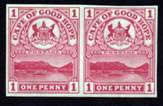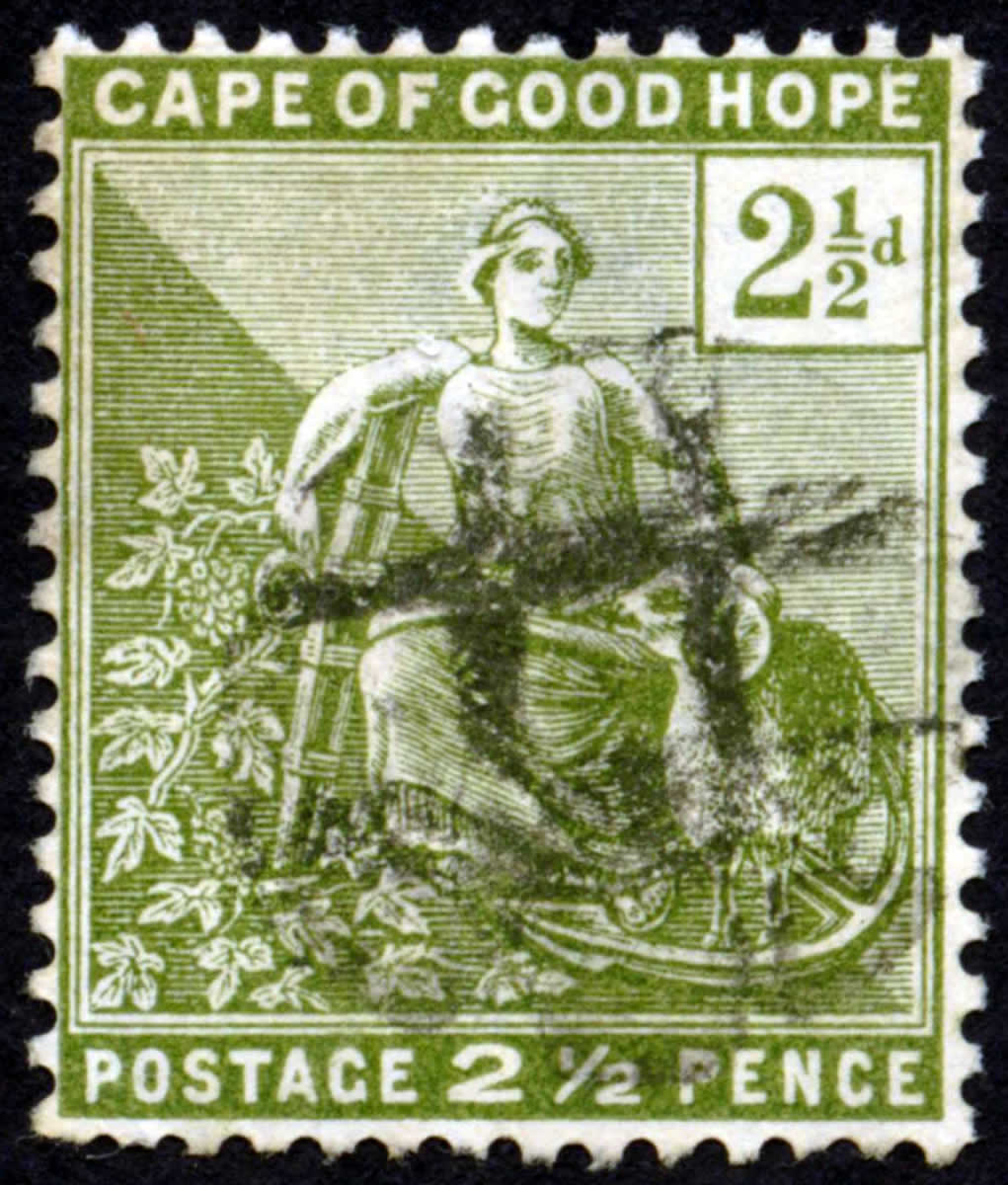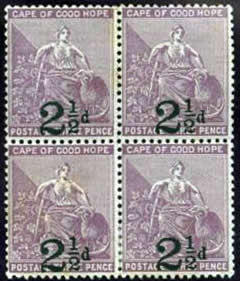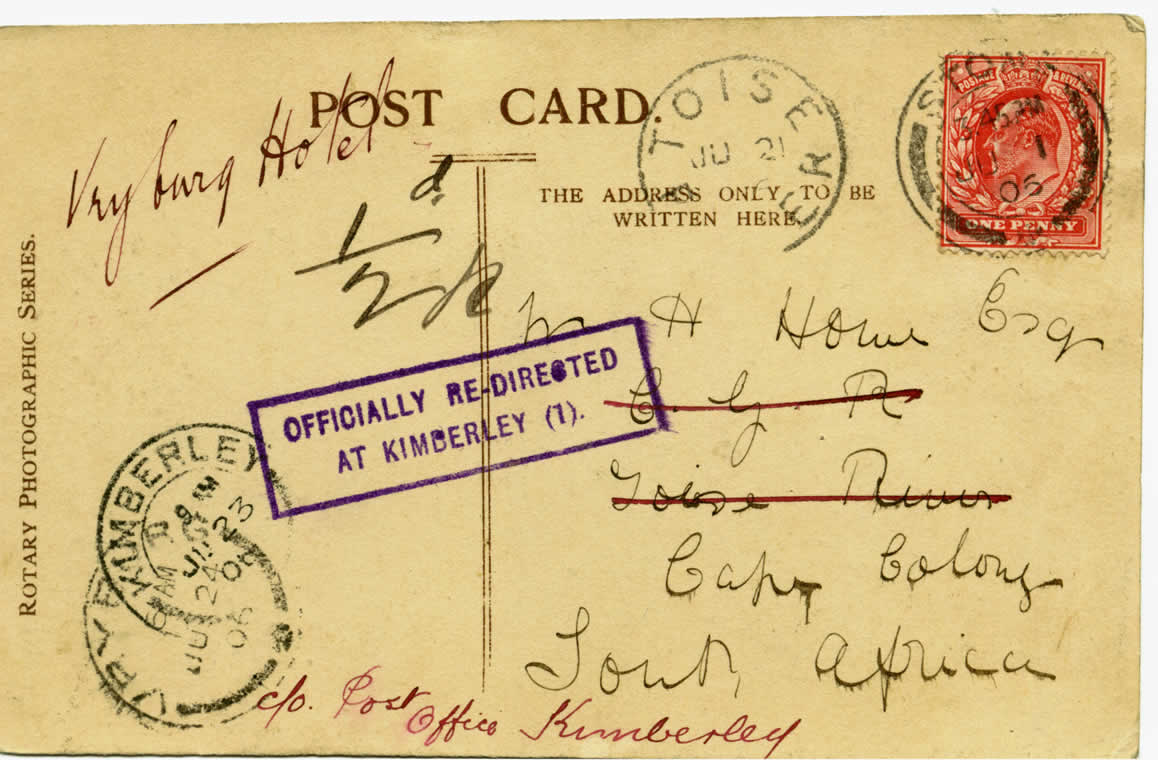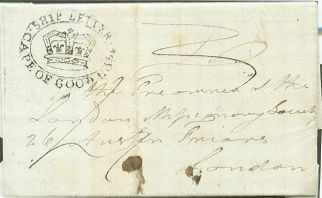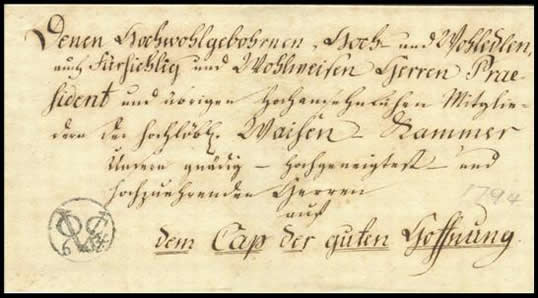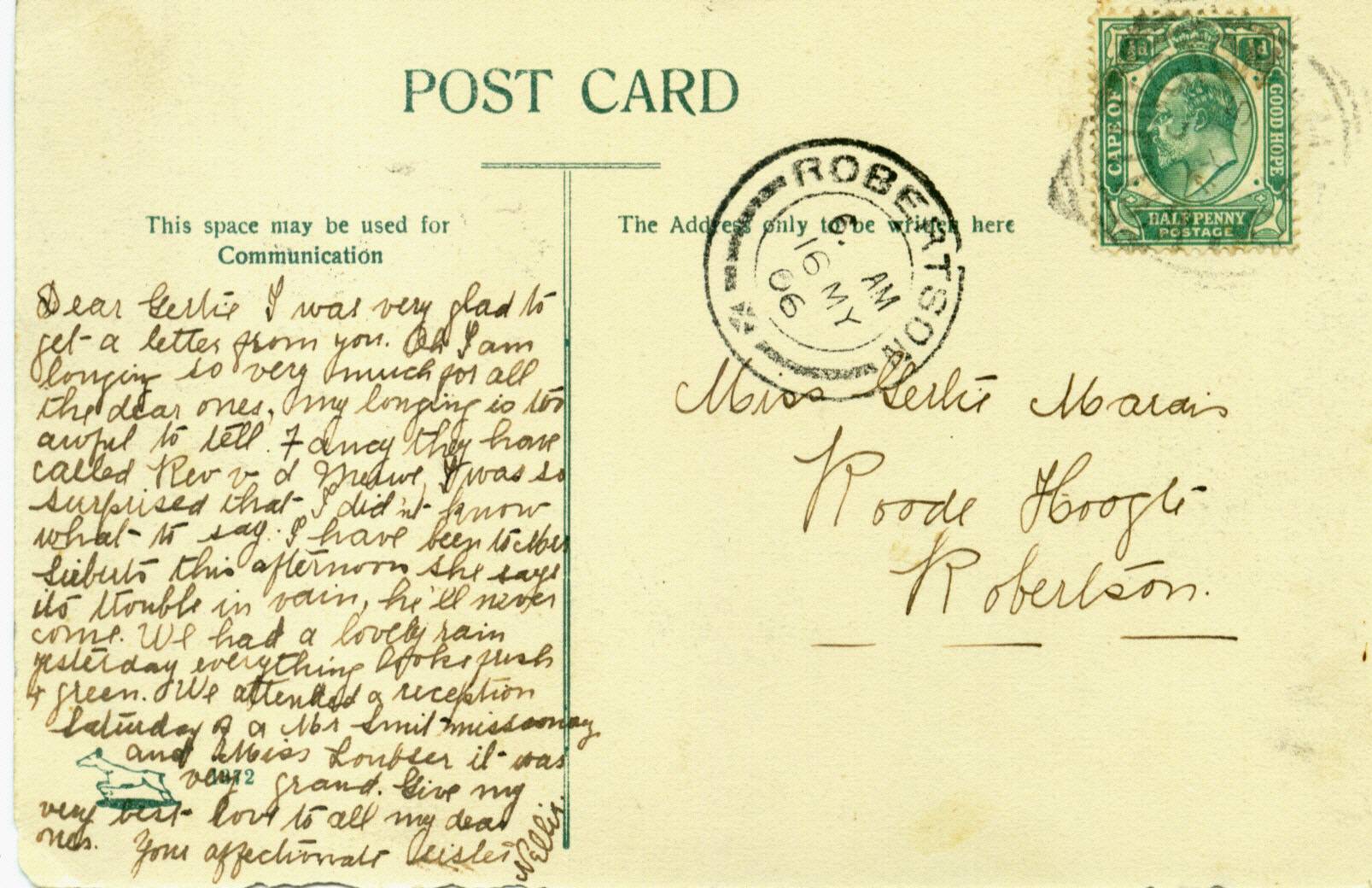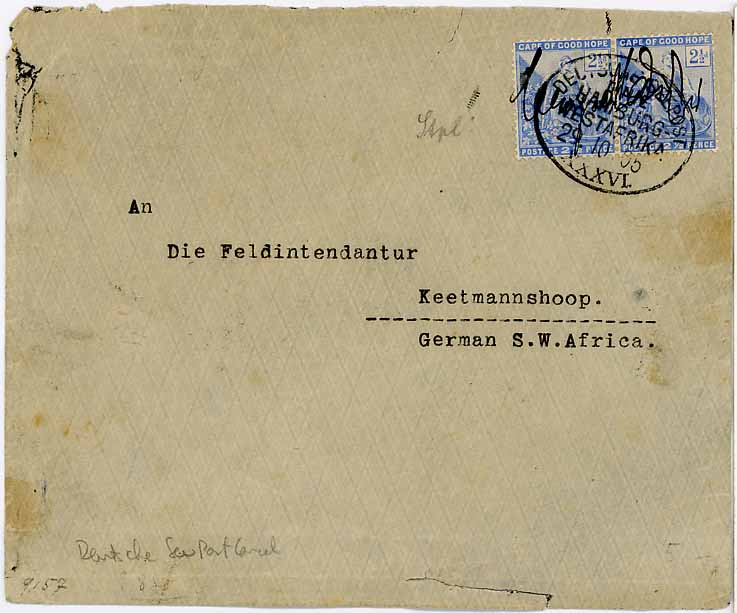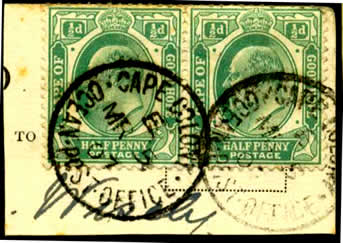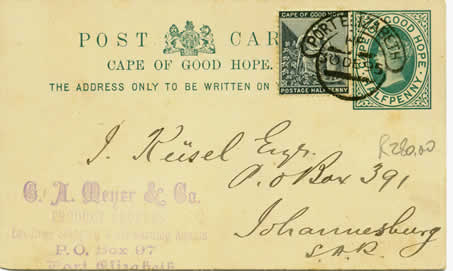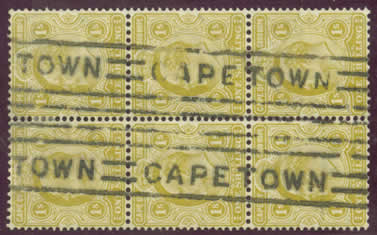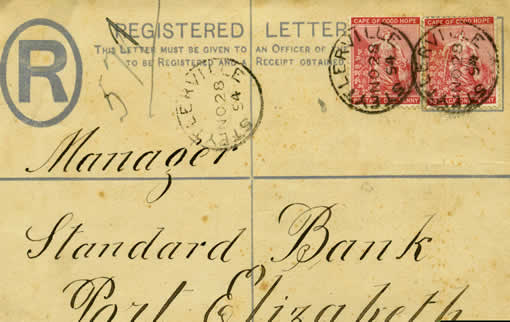On the 21st January 1900, a One-Penny stamp of an entirely new design was issued for the purpose of commemorating the establishment of Imperial Penny Postage.
The Permanent 2 1/2 pence stamp of June 1892
The issue of the 2 ½ d provisionals in March 1891 satisfied the short term requirements of the Cape of Good Hope Colony for stamps of this value. Having solved these immediate problems steps were taken for the manufacture of the necessary plate for the printing of stamps of this value for permanent use.
Rectangulars – Seated Hope 2 1/2 d Surcharge 1891
In March 1891 a stamp of a further and final value was added to the list of postal adhesives of the Colony, namely the 2 ½ d. The reason for this addition was the reduction of postage on half-ounce letters to the United Kingdom, as indicated in3a notice which appeared in the Government Gazette of…
Redirected Letters. Markings of the Ancillary Services
Letter required to be redirected because the addressee had moved needed to be additionally stamped with an amount equal to the original postage; an amount that was required each time the letter was redirected. If the addressee refused to pay the additional redirection fee, the letter was returned to the sender, who was then liable…
Second British Occupation of the Cape of Good Hope
In 1806 England and France were still at war. The Batavian Republic was sympathetic to the French. As the Cape of Good Hope was becoming a major strategic point and its defenses were virtually non-existent the English launched an expedition for its capture.
The VOC Handstamp
A proclamation signed by the Acting Governor, Johan Isaac Rhenius on 2nd March 1792 formed the basis of the establishment of a postal service at the Cape of Good Hope Colony. The post office dealt exclusively with mail to and from overseas. (see establishment of First Cape of Good Hope post office ). A lot…
The Double Circle Postmarks of the Cape of Good Hope
The Double Circle Datestamps of 1900 to 1902 The double circle datestamps of 1900 to 1902 were the final postmarks issued befor the Cape of Good Hope was absorbed as a province of the Union of South Africa. The postmarks can be divided into three essential types based on what appears at the bottom of…
Deutsche Seapost
The Paquebot and Foreign Handstamps Regulations drawn up by the Universal Postal Union governed the handling and mail matter landed from ships at the Cape of Good Hope and other members of the Universal Postal Union. Minor variations to these rules could be made within the framework of the general principles subscribed to by the…
Ocean Post Office of the Cape of Good Hope
In this web site the maritime postmarks of the Cape of Good Hope are divided into three sections. The marks applied on board ships at sea (the Cape of Good Hope Ocean Post Office postmarks) – dealt on this page, the marks applied on board ship in the harbour (the shipping postmaster’s handstamps and finally…
Experimental Postmarks
Introduction Between the years 1882 and 1900 six handstamp designs were issued on what appears a highly selective basis. Their main characteristic being their unusual design. The purpose of them being issued was to find a datetamp that could be used for simultaneous defacing and dating of letters. The majority of them were only used…
The Parcel Post – Introduction
Parcel services were established very early during the postal history of the Cape of Good Hope. The first official parcel service was established between the Cape of Good Hope and England as well as other colonies on 15 August 1815. An inland parcel post service was established on 1 July 1882 for the Cape Colony,…
The Zwartkops Sorting Tender
By the year 1894, T.P.O. services were operating on the following six routes: Cape Town to De Aar, De Aar to Port Elizabeth, Zwartkops to Uitenhage, Middleburg Road (Rosemead) to Stormberg Junction, Naauwpoort to Norval’s Pont and Norval’s Pont to Johannesburg. To avoid delay of postal matters to and from places served by the Graaf-Reinet…

